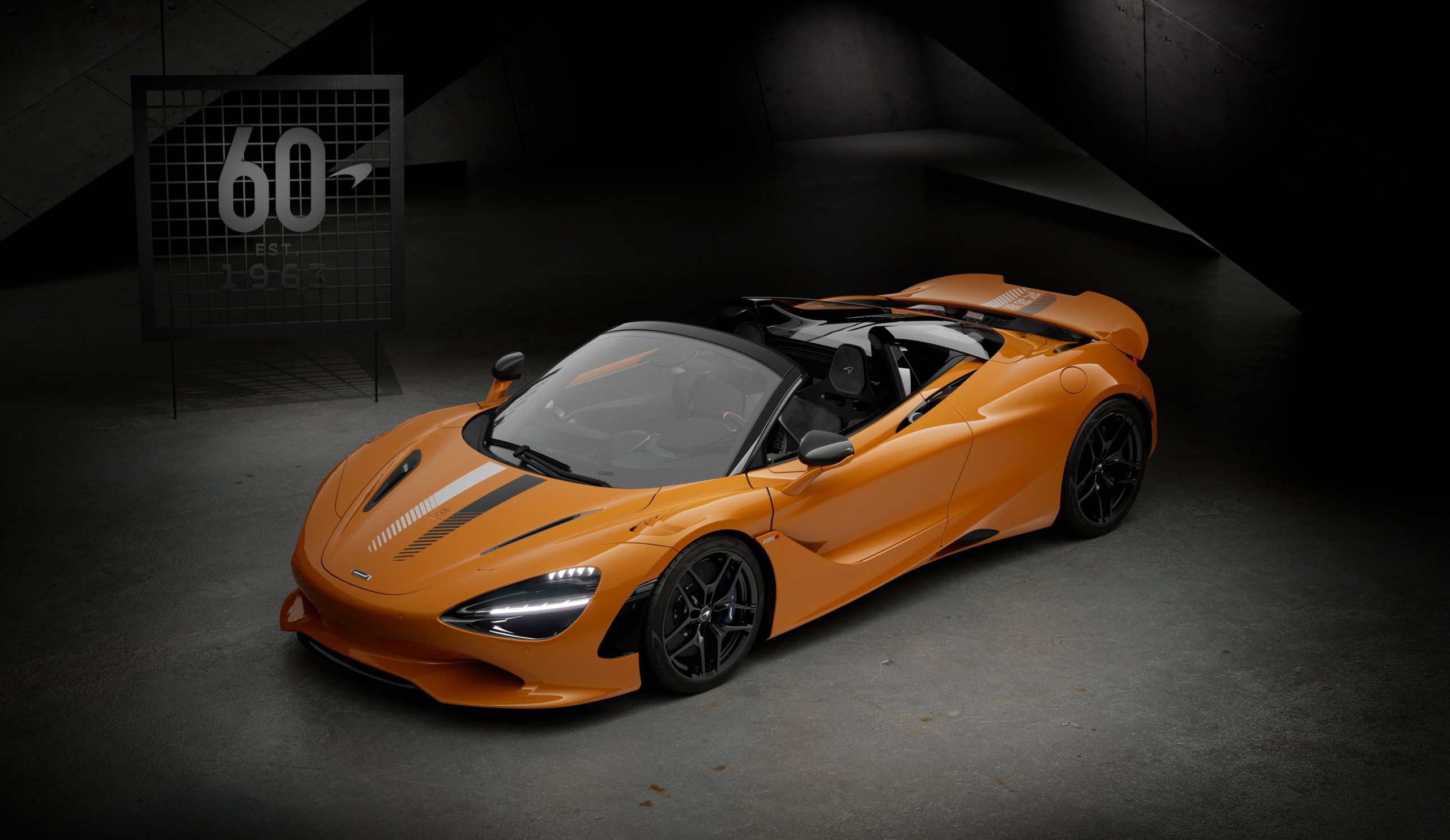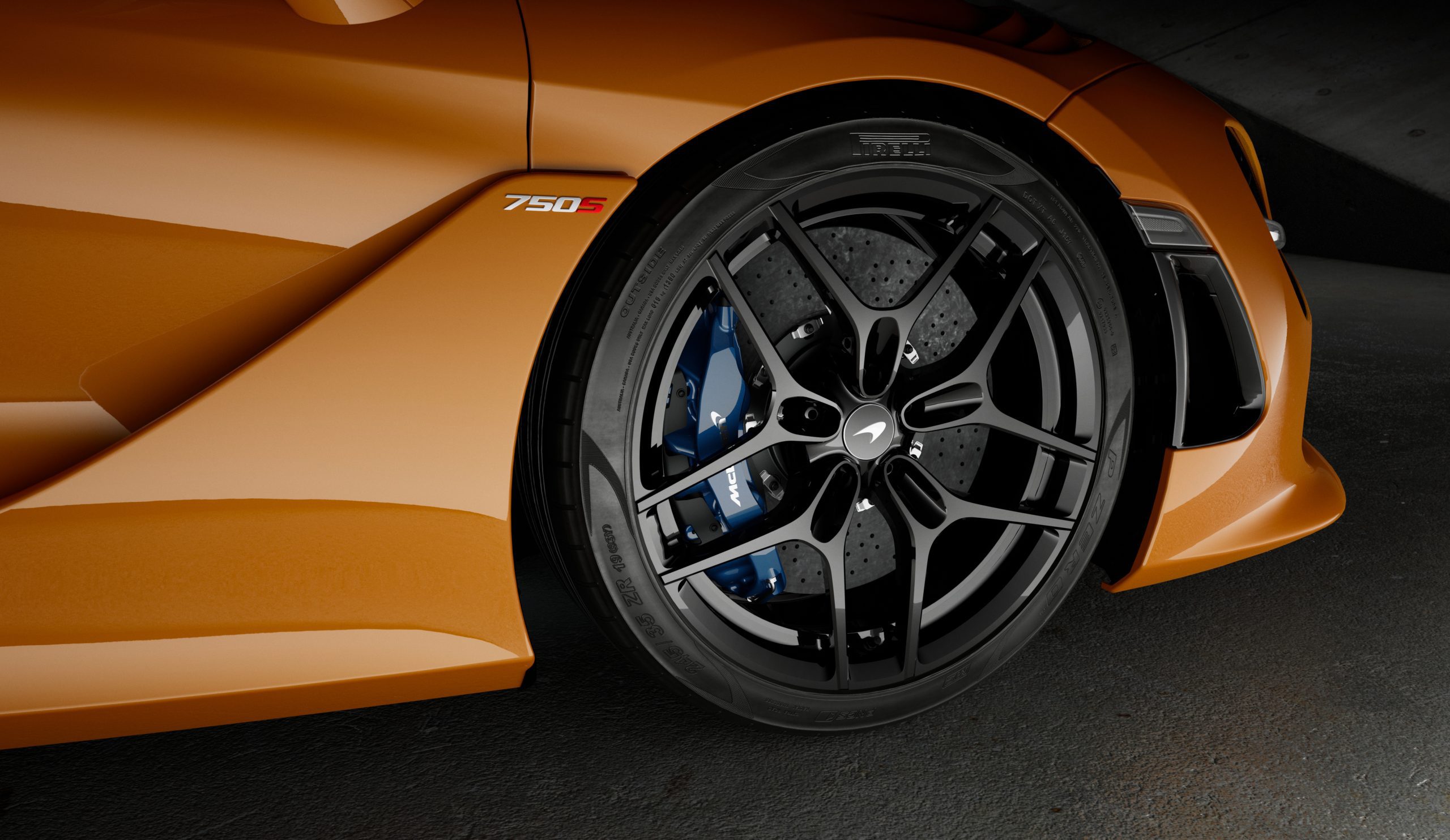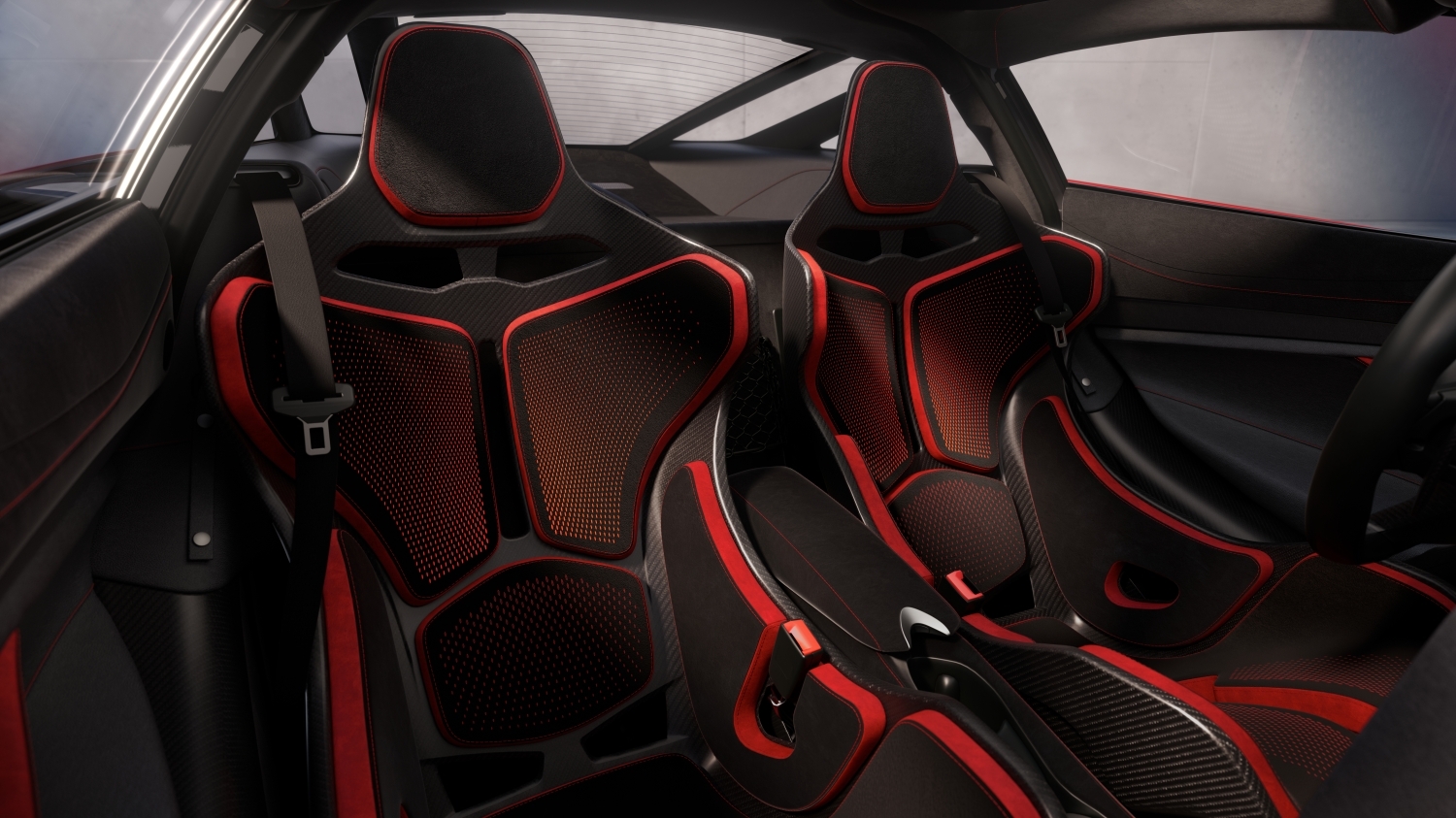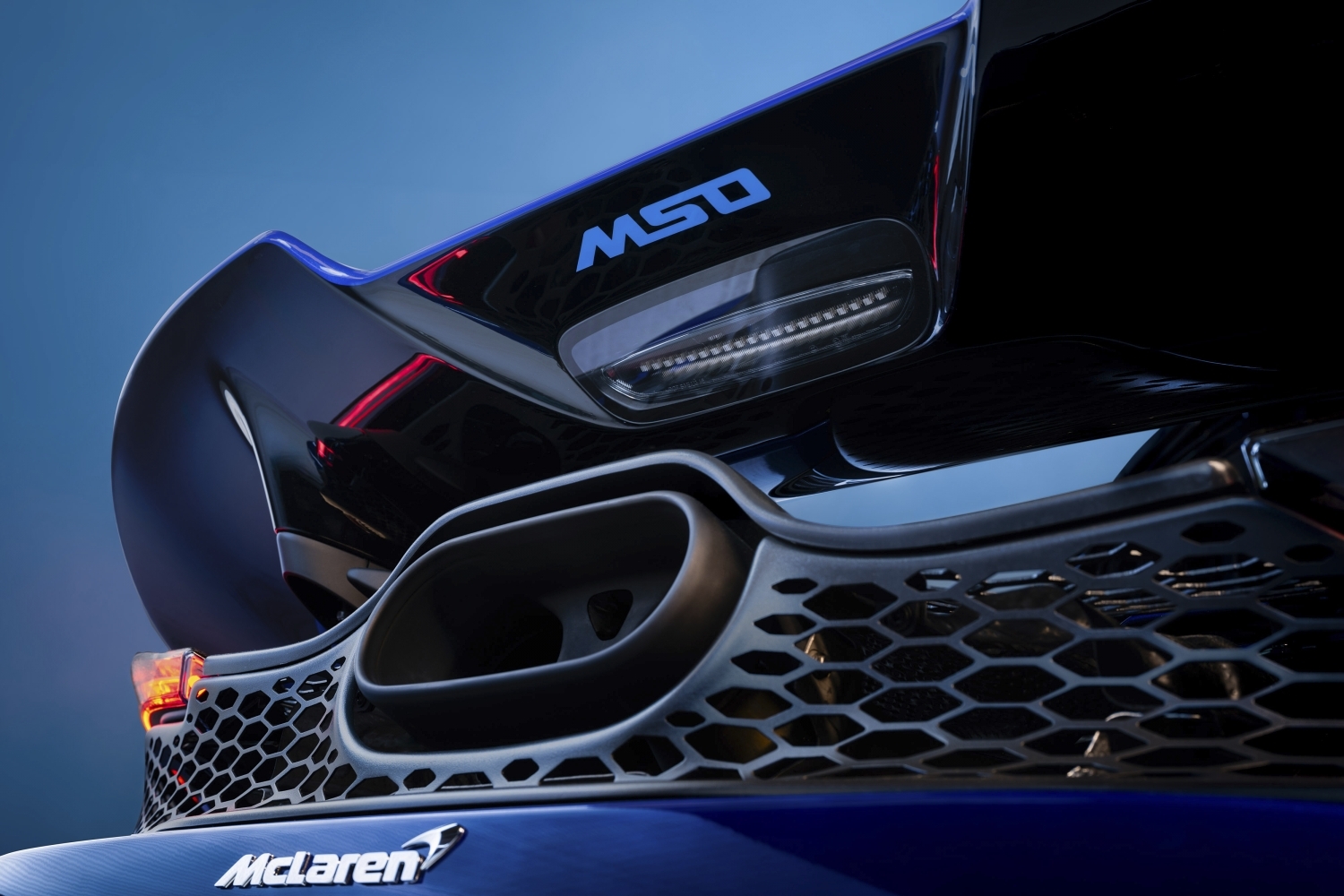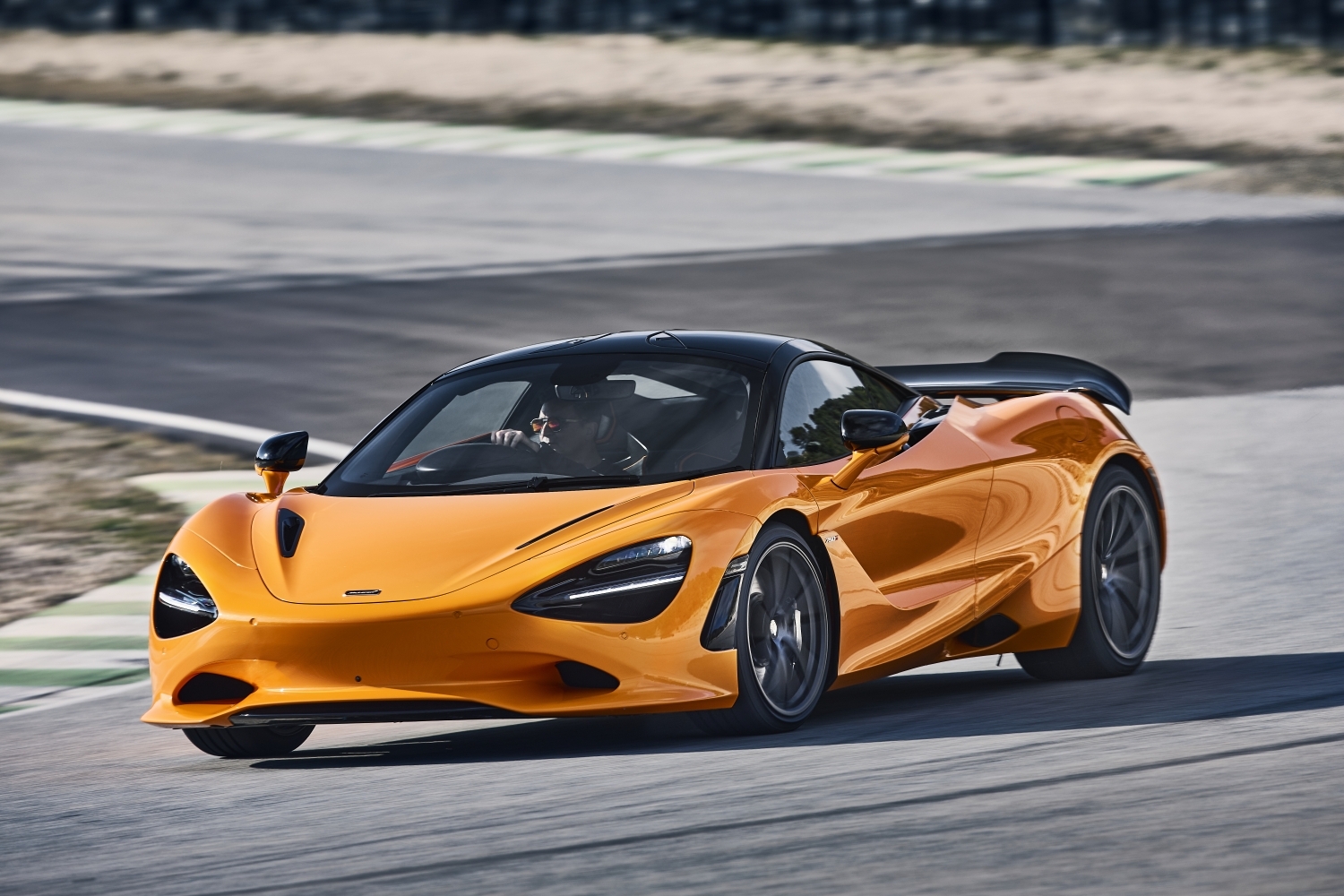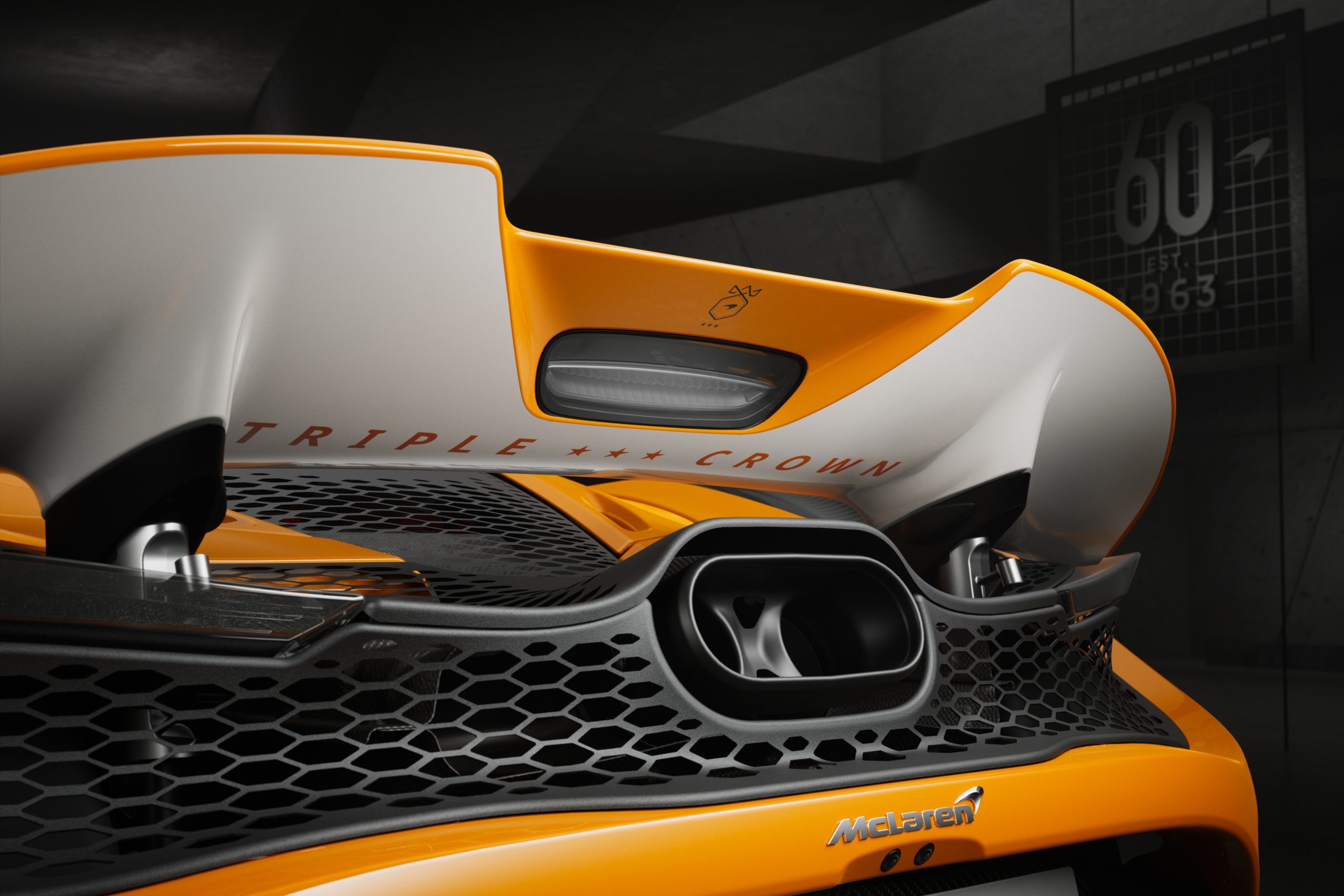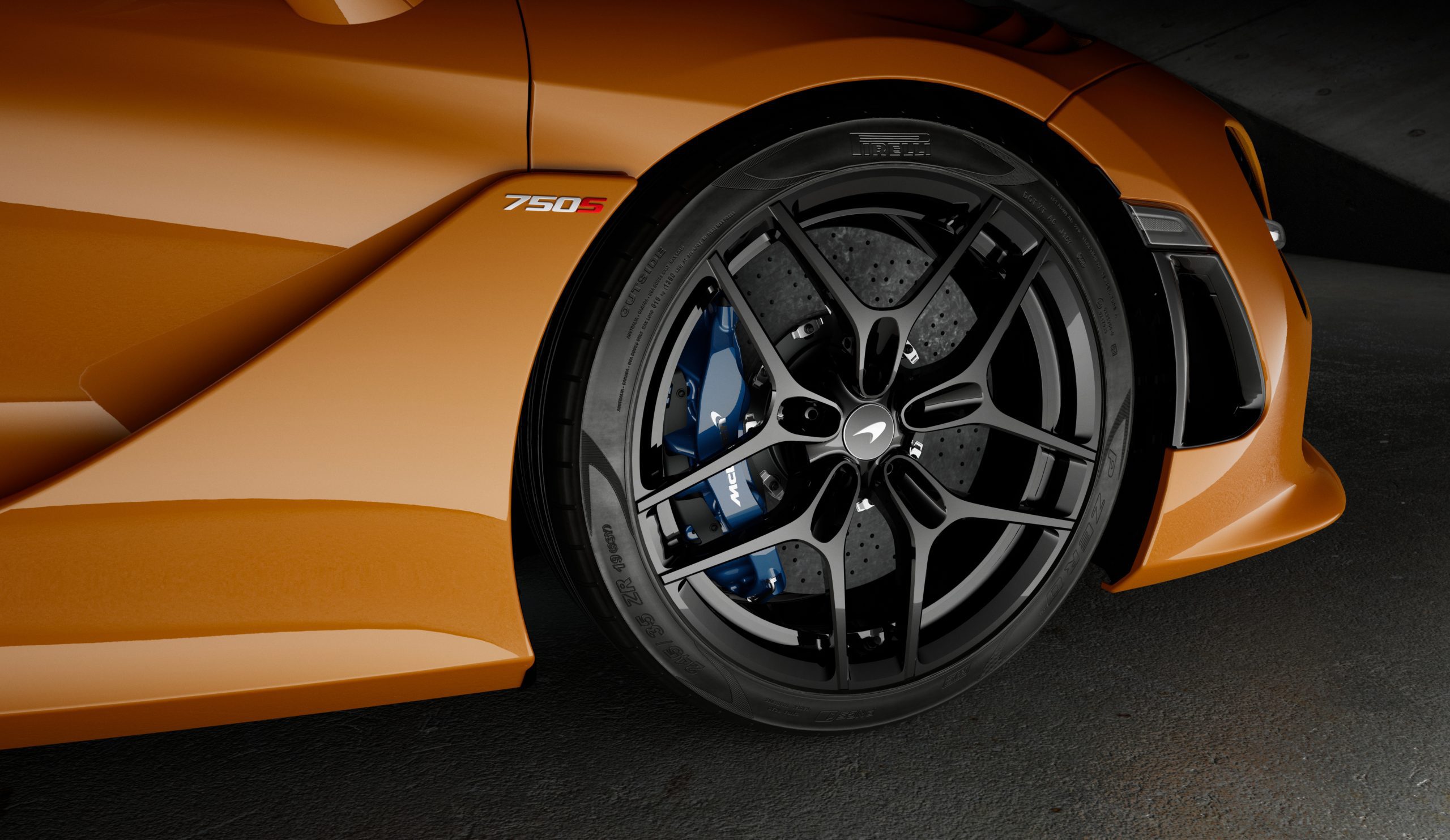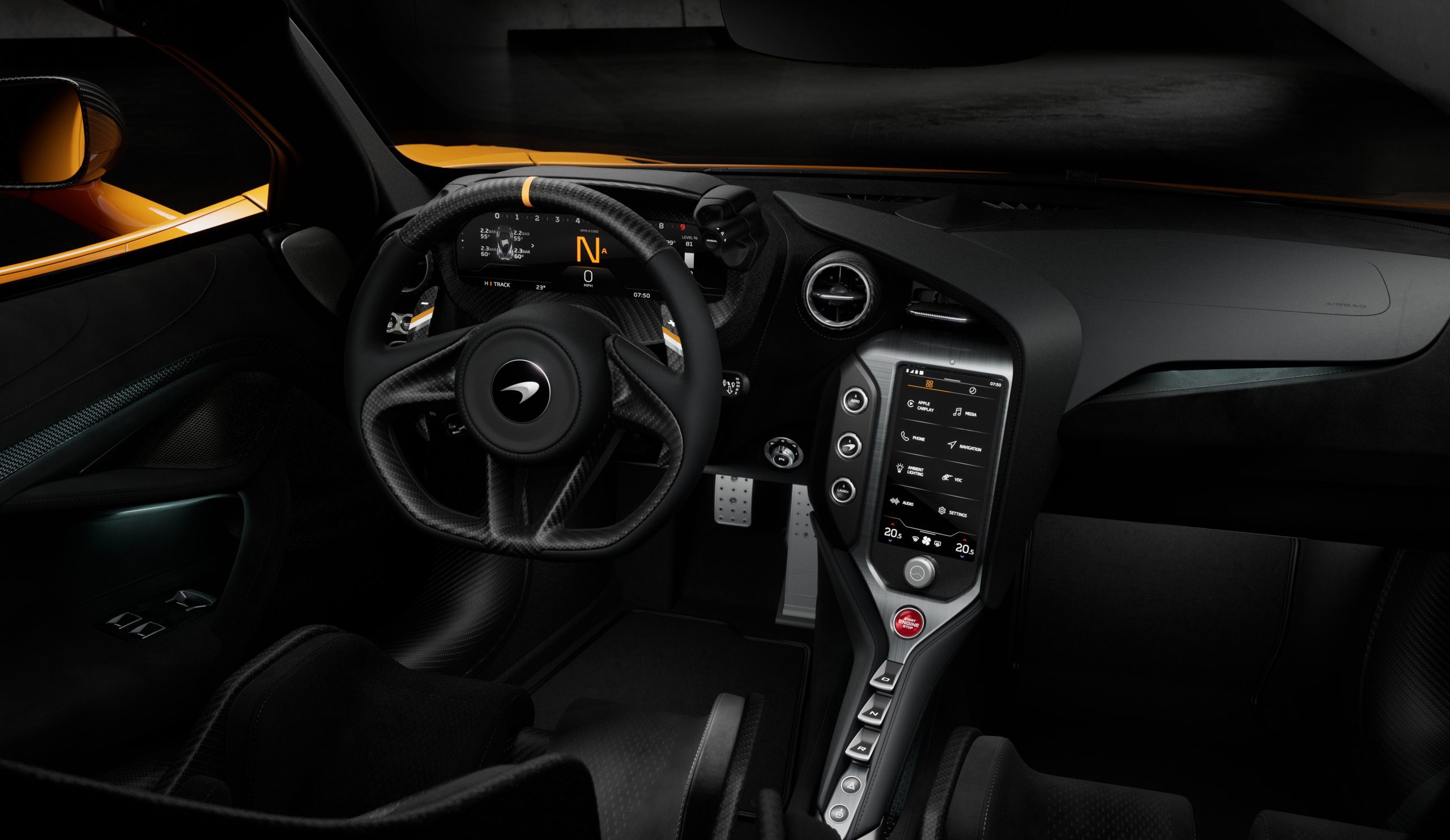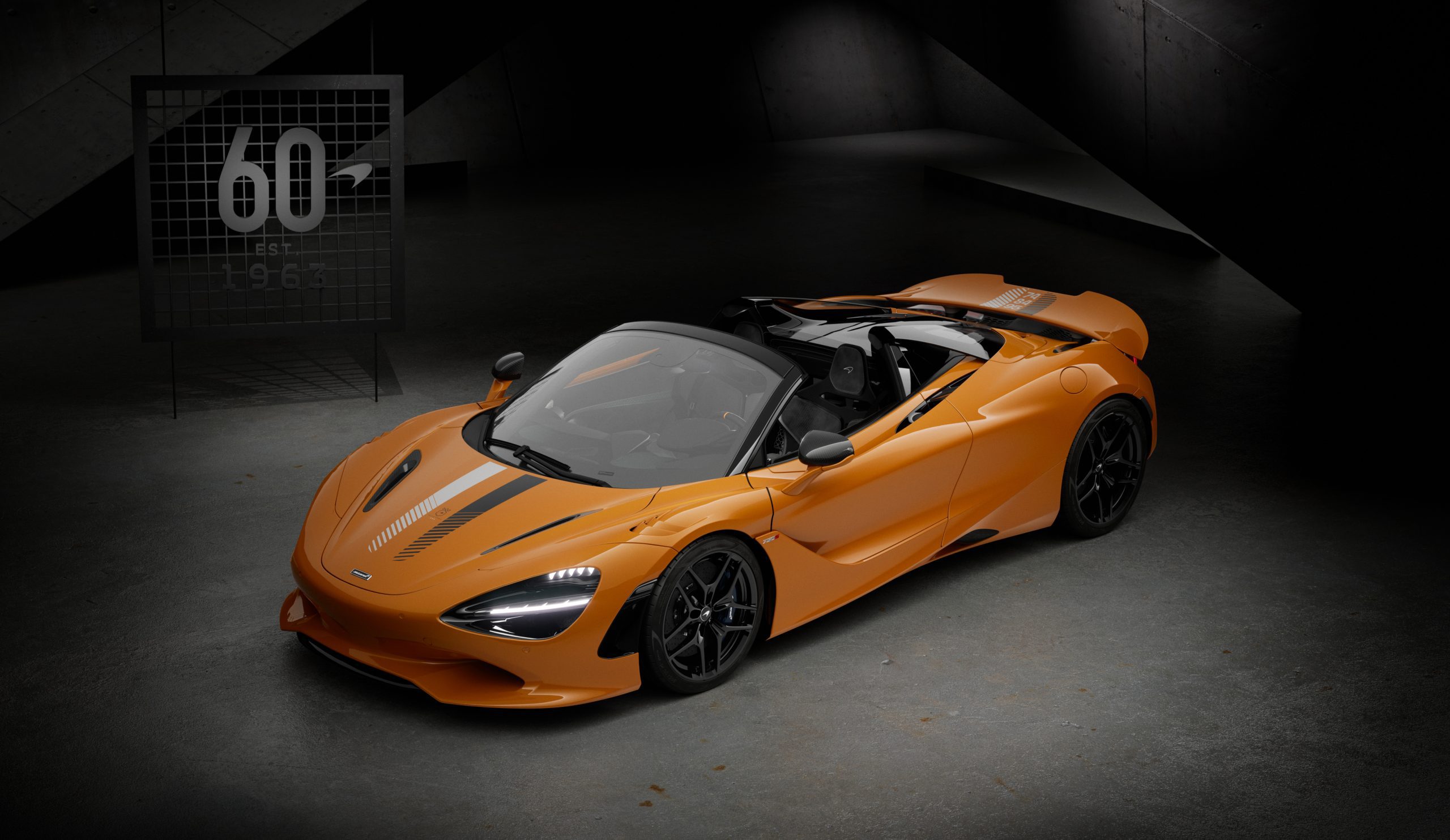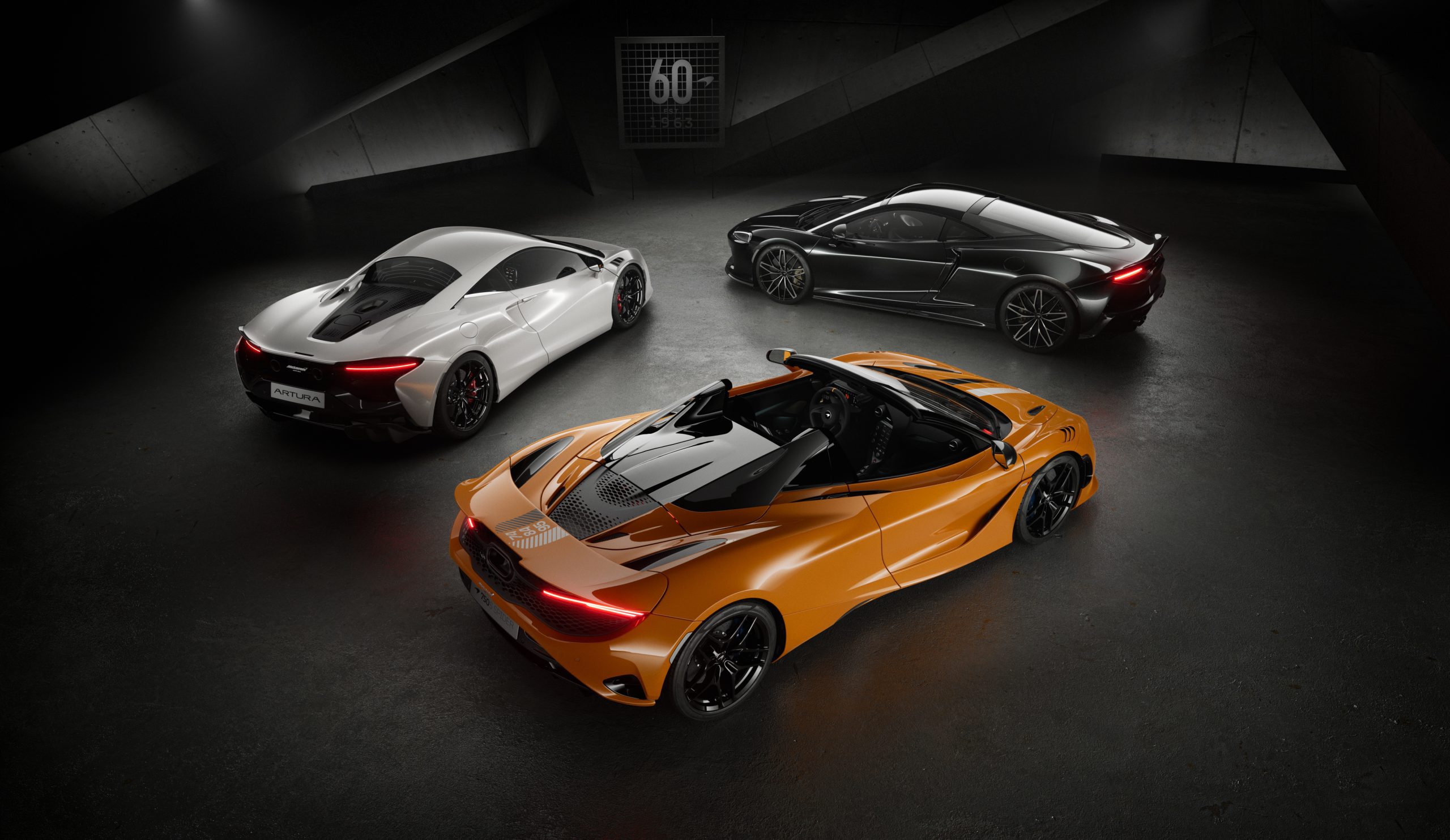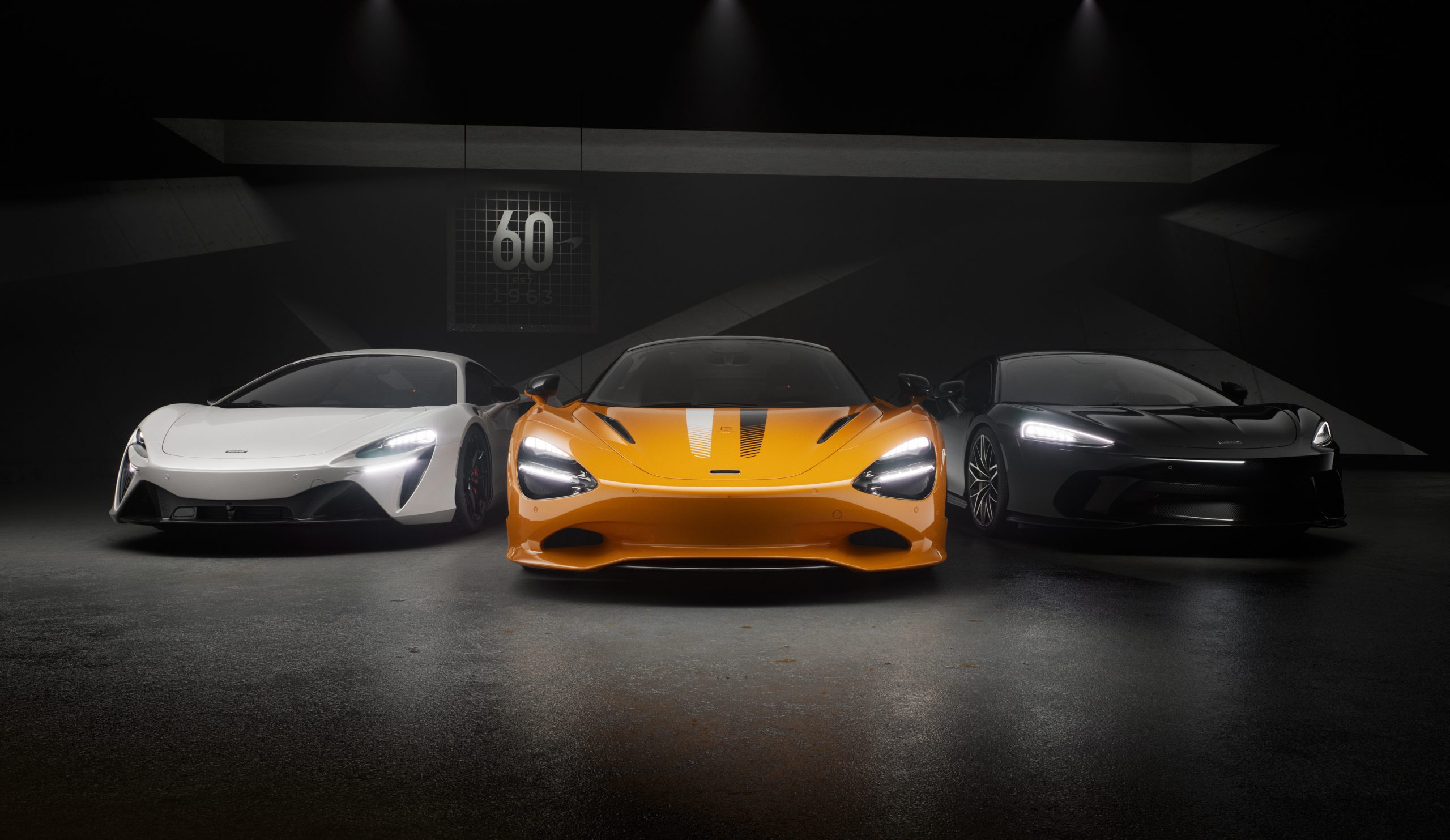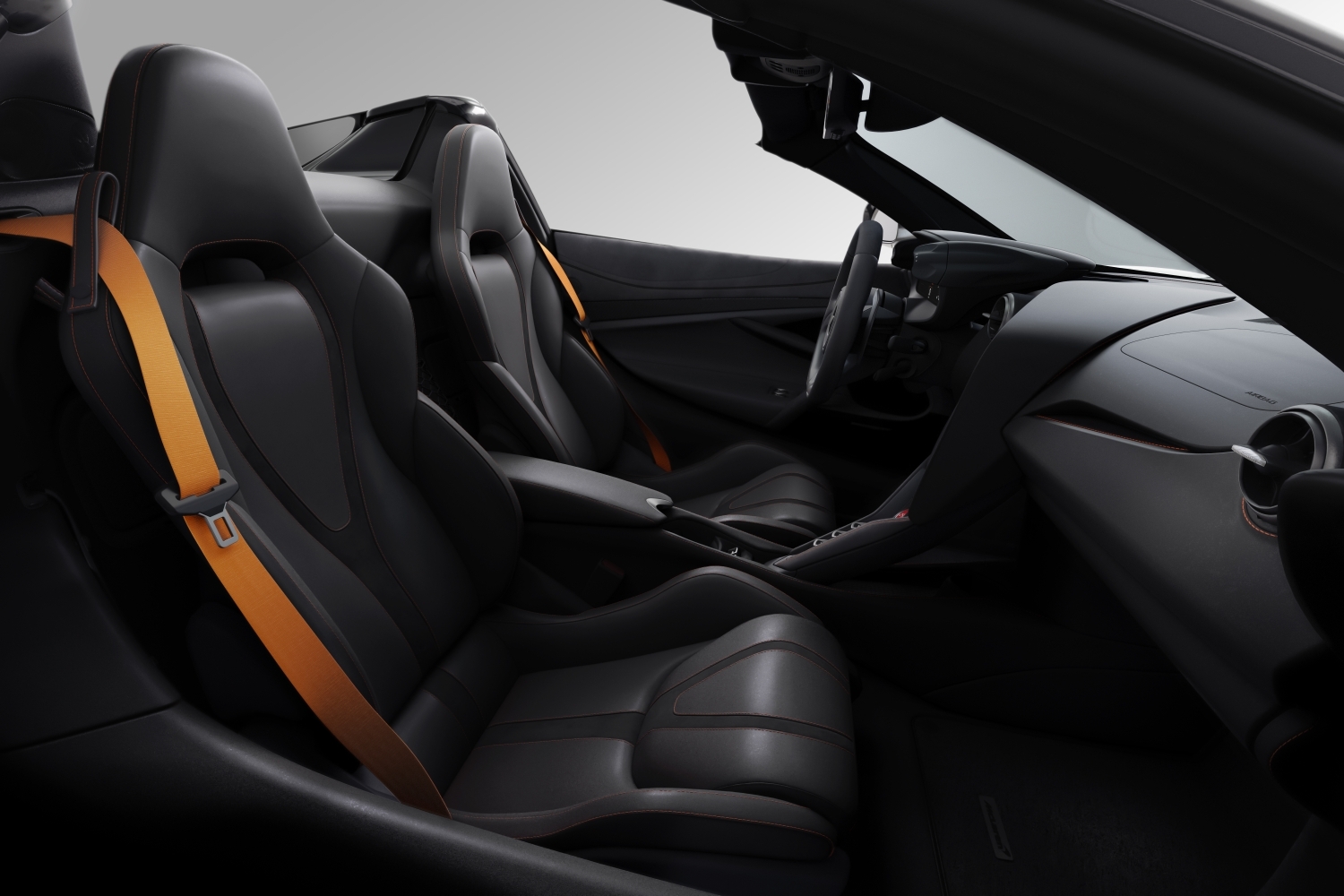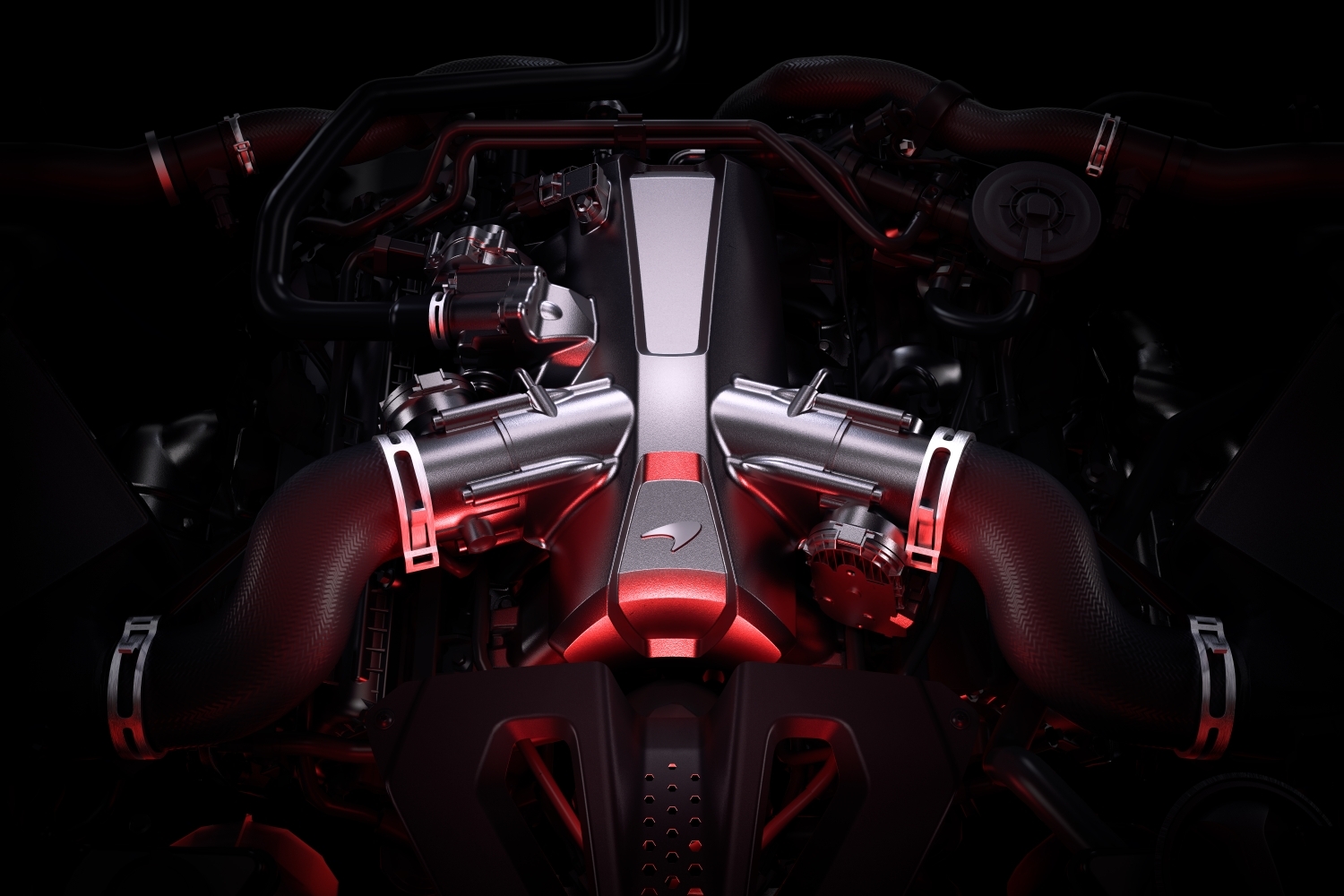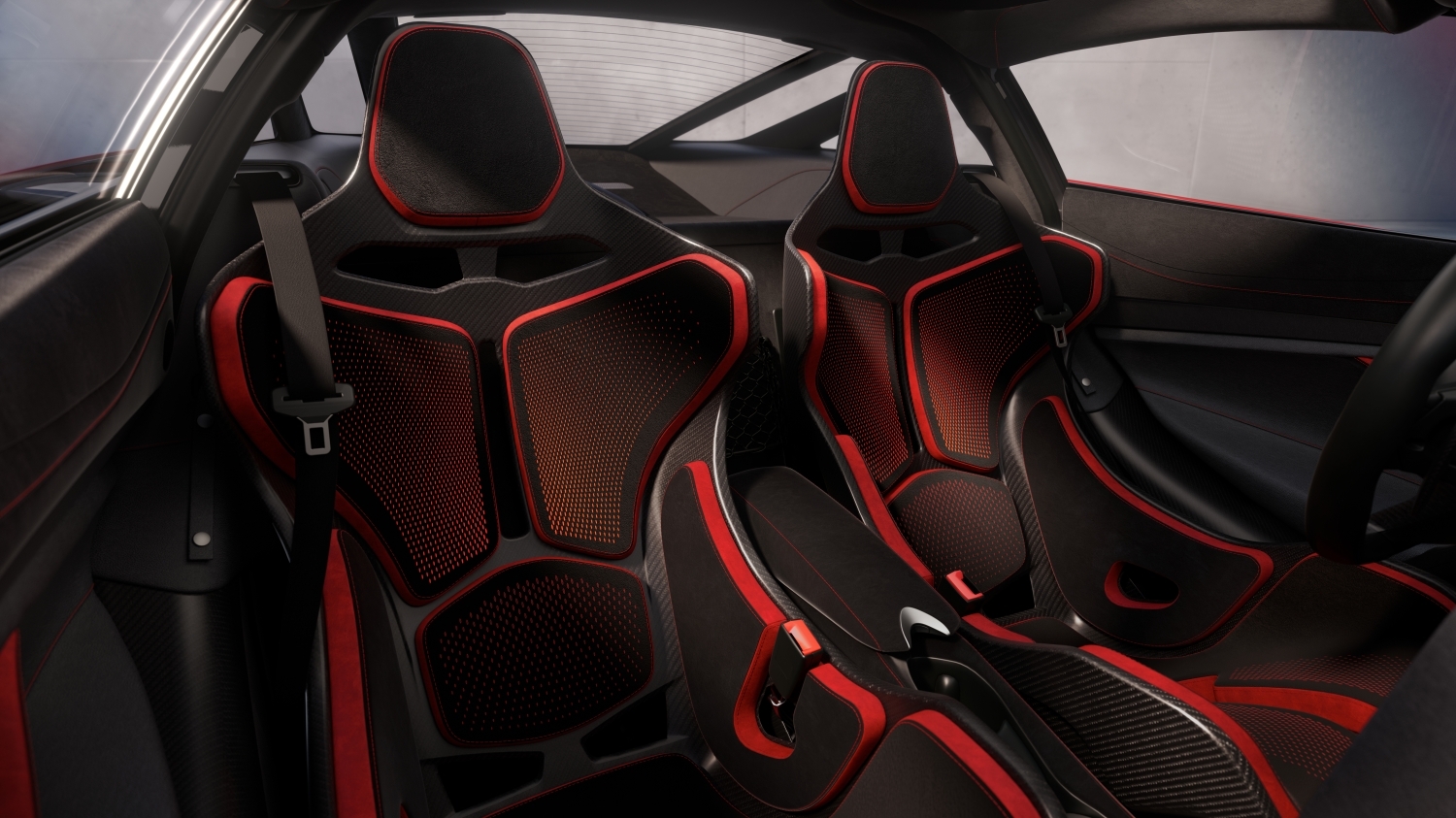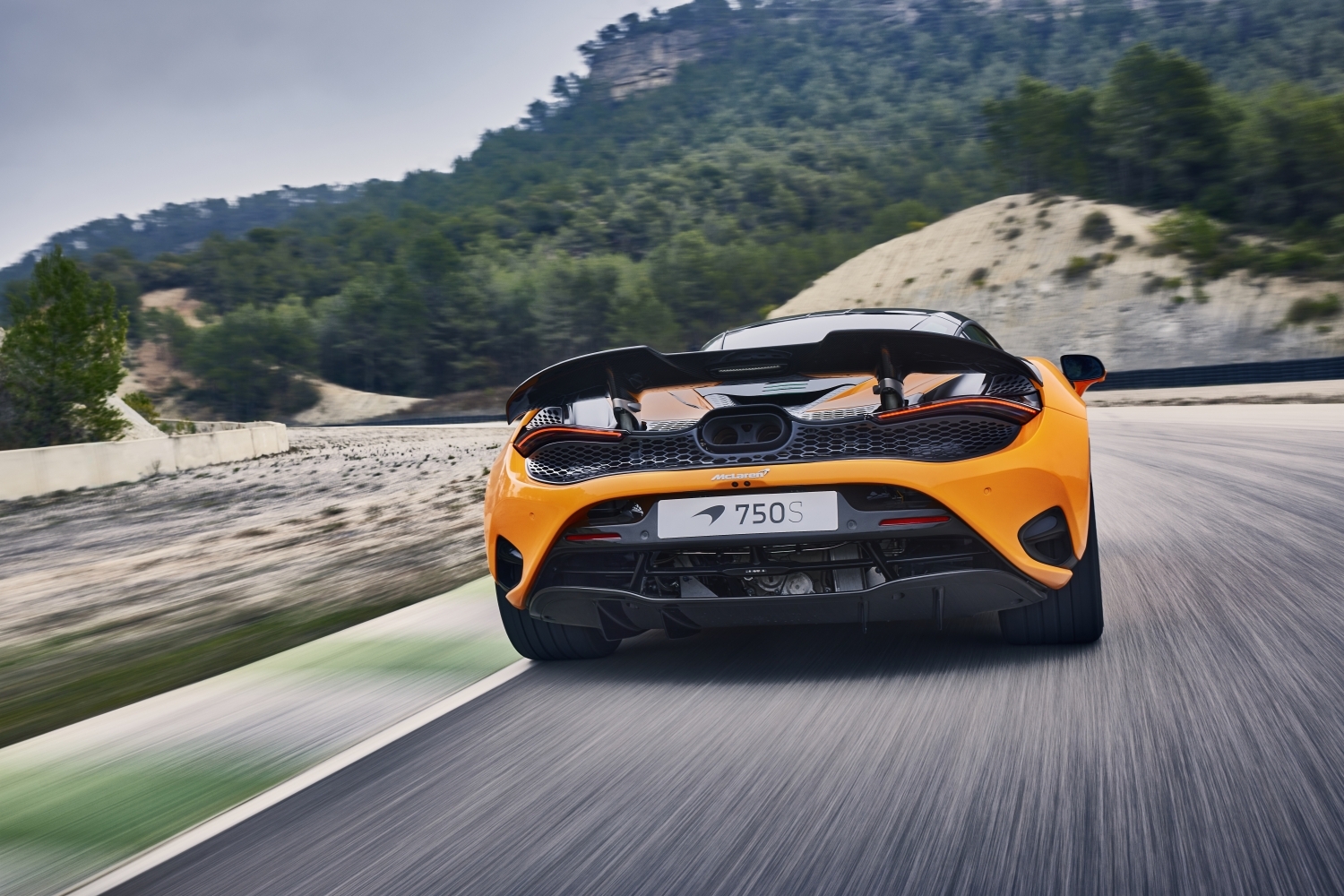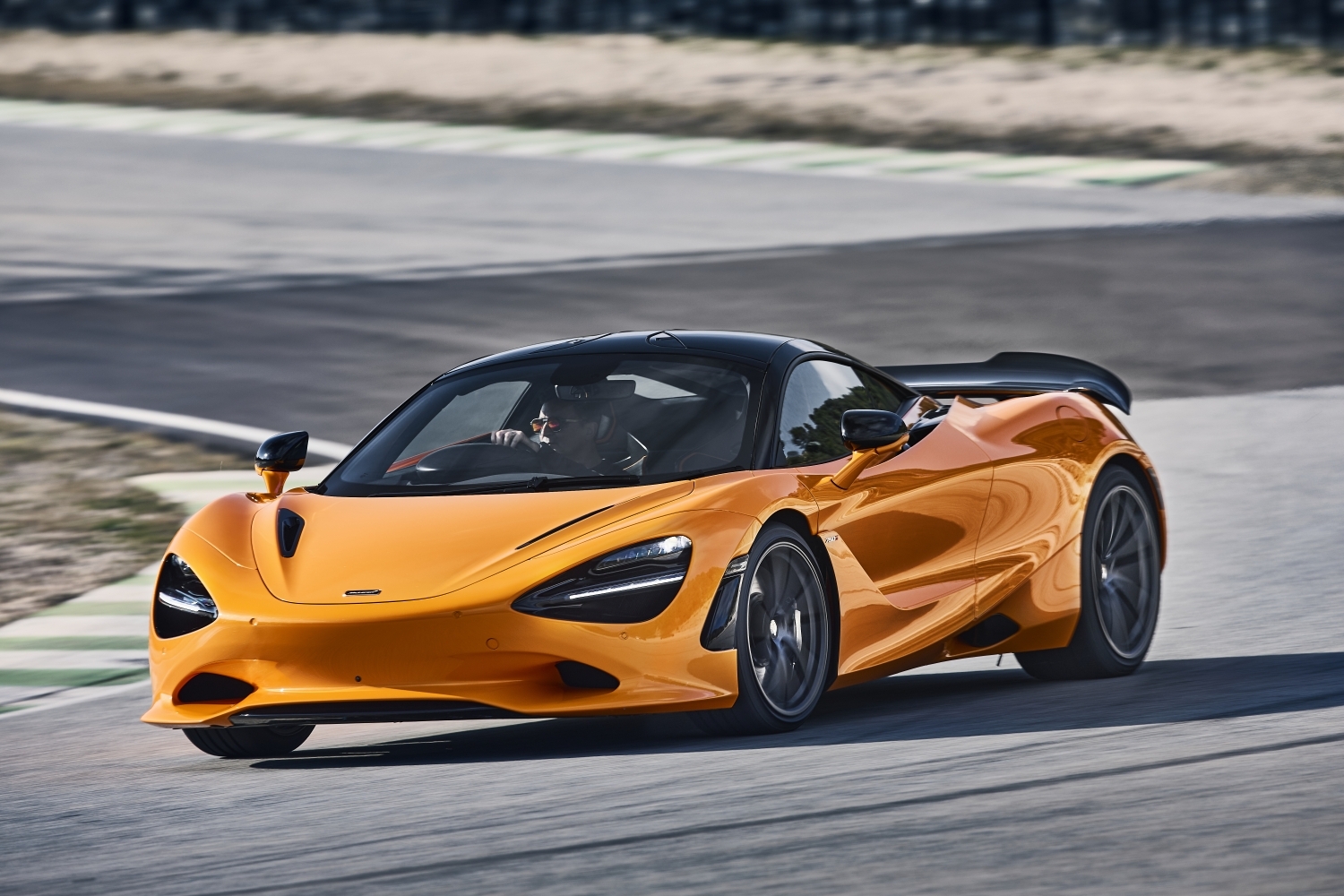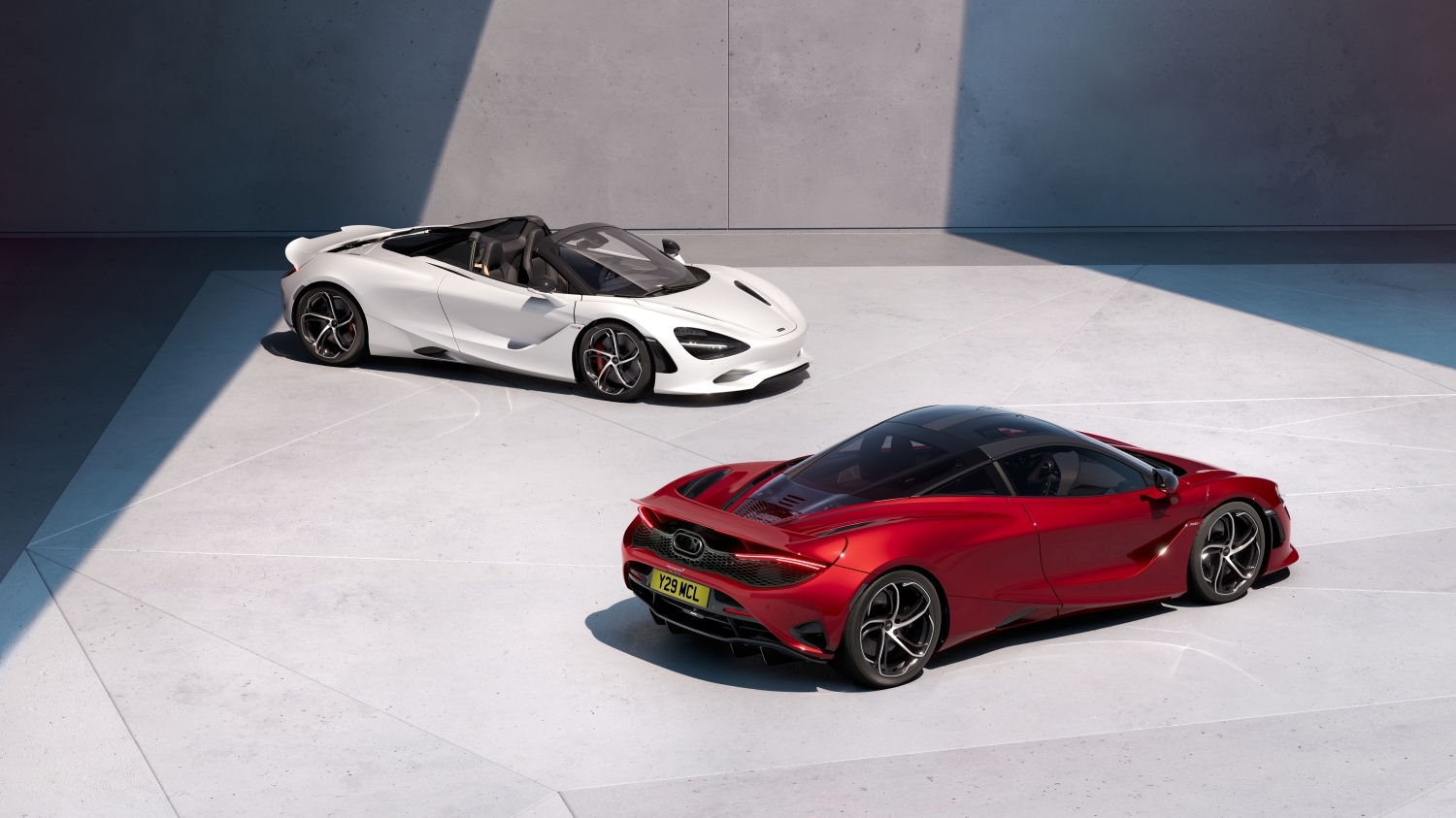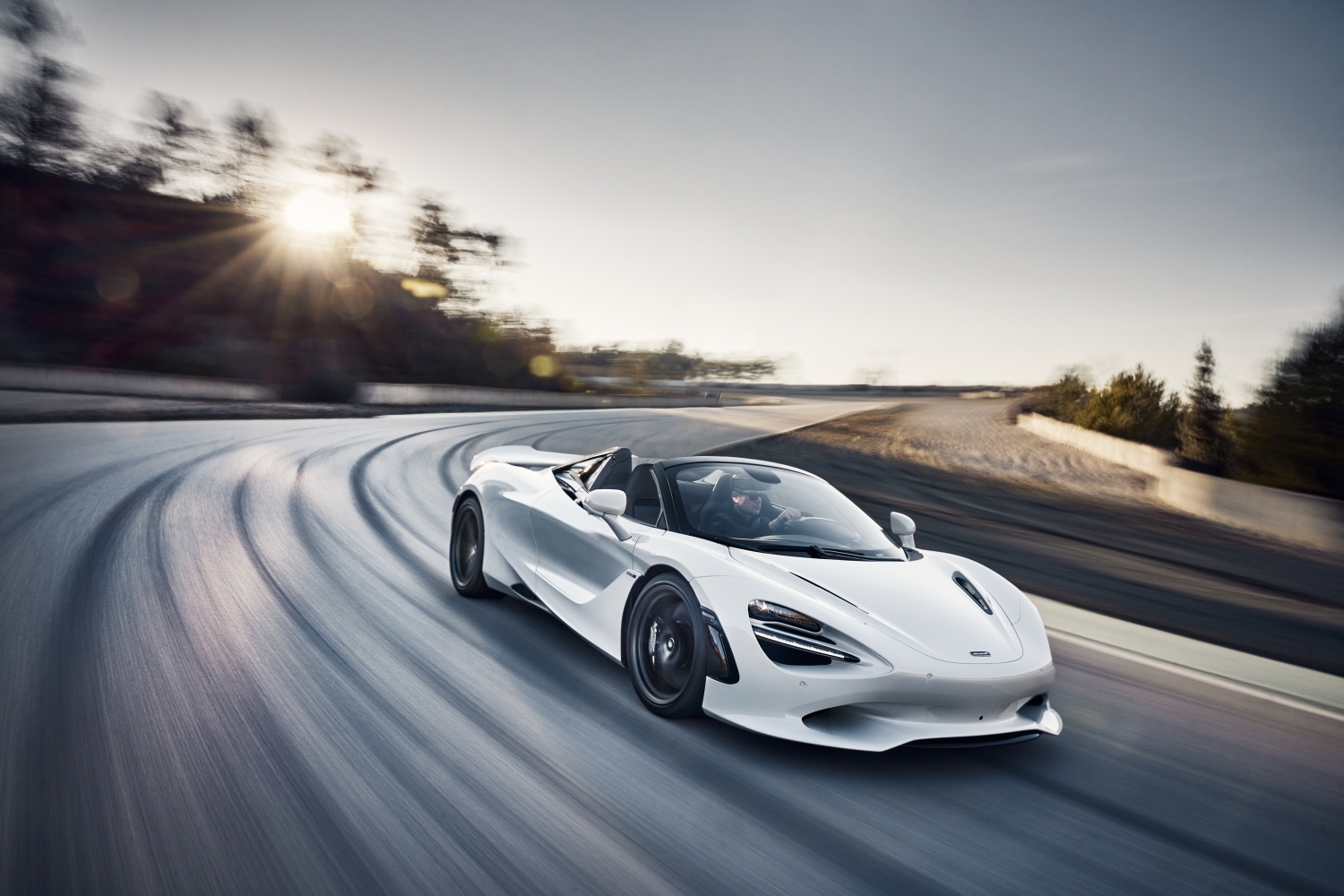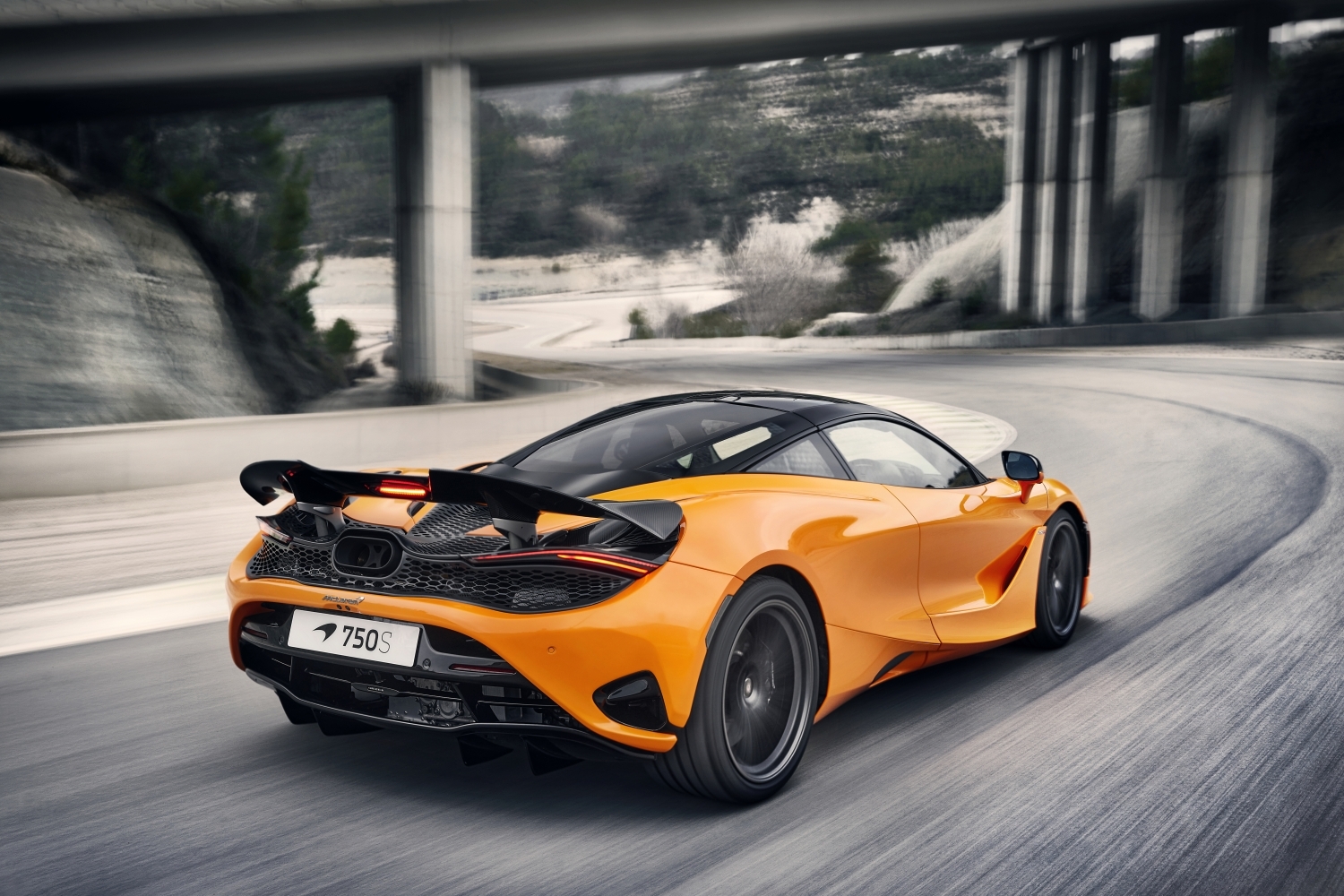With Great Power, Comes Great Responsibility
In With The New-ish
(Some) Change Is Good
Performance & Drivetrain
As things go with the “less is more” philosophy, the familiar and quintessentially awesome 4.0L twin-turbocharged V8 continues to power the McLaren 750S albeit with a slight power bump that allows it to produce some 750 PS (740 bhp)—up from its predecessor’s 720 PS (710 bhp), and hence the moniker change. Torque is also up to 590 lb-ft, compared to 568 lb-ft in the outgoing version. Through this, an ever-so-slightly more wild soundtrack is produced through a redesigned and lighter center-exit exhaust.
On paper it’s going to be a smidge faster off the line than the previous car, which completed the 0-60 mph sprint in just 2.8 seconds. However, its superiority shouldn’t just be mindlessly spouted off from what the spec sheet reads. McLaren claims that additional revisions were done to the powertrain to help the car feel better and more responsive to drive. Amongst some of these changes include a shortened final-drive gear ratio, pistons from the 765LT and improved transmission programming for the 7-speed DCT.
Handling & Chassis
The star of the show here would have to be McLaren’s state-of-the-art Proactive Chassis Control linked-hydraulic suspension. This is what is central in allowing the McLaren 750S to excel at just about every task you throw at it—from comfortably navigating dilapidated city road ways to masterfully clipping apexes at the race track, it’s able to adapt the car so that it can be optimized for the driver and all types of situations. They’ve also re-tuned the spring rates, making them a bit softer and stiffer in the front and rear respectively, and with the intention of making the car a bit more “toss-able” around turns.
Naturally, electronics are a big piece of the puzzle here too, with a revised electro-hydraulic steering system responsible for transmitting inputs and outputs between the chassis and the driver. McLaren has quickened the steering ratio and improved the power assistance unit to improve the car’s reaction times in concert with the driver’s actions. Of course, McLaren couldn’t really proclaim that they’ve made “a car that can do it all”, if it couldn’t drift! That’s where the aptly named Variable Drift Control comes in, allowing the driver to pre-select the desired slip angle at which the car is able goes sideways around corners—and most importantly in a manner which accommodates a caliber of driver who doesn’t necessarily make his or her living performing this otherwise challenging action.
Those who frequent the circuits should probably opt for the available ceramic brake package, which fashions the same components used on the 7-figure McLaren Senna. Not only will it help reduce the car’s unsprung weight, but also provide the additional durability required for the punishment a car like the 750S is due for when it’s at the track. The 750S comes standard with a set of staggered wheels—19s up front and 20s in the back—wrapped in grippy Pirelli P Zero tires. For those wondering more about some of the practical sensibilities, the 750S is also equipped with a front-end lifting system to assist with navigating over speed bumps and driveways with ease.
Design & Interior
It was never going to be an easy task making the McLaren 750S lighter than its predecessor without performing some sort of overhaul, but the team at Woking have managed to pull that off too. Both the coupé and Spyder variants manage to shed precisely 30 kg each, with an extra serving of carbon fiber bits—including standard carbon bucket seats which shed a whopping 17.5 kg on their own—helping the cars onto the summit of the power-to-weight ratio rankings in their respective classes. The fixed-roof variant tips the scales at just 1,389 kg while the convertible is just a bit heftier, coming in at 1,438 kg. Virtually all of that difference is due to the latter’s additional roll-over structure and roof mechanism, with both cars being completely identical otherwise.
Ultimately, it’s a pretty cookie cutter sportscar diet plan, without the need to resort to any ideas of extreme spartan-ism. This is good, because remember, the McLaren 750S has to be well prepared for daily driving duties. Yet somehow, they’ve min-maxed it for the race track too, improving the dynamics with a longer front splitter and redesigned active rear wing which help to improve the downforce balance on the car. The front and rear fascia have also been refreshed along with new vents along the rear fenders, though in terms of visual changes, the impacts are more subdued than distinctive—McLaren connoisseurs exempt, it would be difficult to distinguish between the 720S and 750S.
Inside the cabin we’re treated to a minimalist’s paradise, with an ideal hybrid of pure functionality and highest quality combining to produce a cockpit which is both beautiful and driver-centric. Principal to this are the aforementioned carbon bucket seats, which I imagine are much more comfortable than they look. If the standard Alcantara fixings aren’t your thing, an available TechLux package is available which replaces the majority of the aforementioned material with high quality napa leather. Interestingly, McLaren have decided to forego tacking on any buttons to the steering wheel as is seen on almost all cars produced these days—all the car’s features are toggled on the central console through a combination of knobs, buttons and a 7″ infotainment screen.
Pricing
The base price of both the McLaren 750 coupé and Spyder are $331,470 USD and $352,740 USD respectively, before taxes and options. As is tradition, the extra equipment and safety hardware on the convertible are what make open-top driving a slightly more premium experience—but those who love the wind in their hair won’t mind. For those of you in a celebratory mode, there are a number of “60th Anniversary” add-ons that can be selected. MSO (McLaren Special Operations) commissions continue to be available for the 750S range, granting buyers the bespoke levels of customization to their build. The costs for that typically fall into the category of “please call to inquire”.
Orders are being accepted now, with the first deliveries expected to land sometime in early 2024 for North American customers. You can configure your own 2024 McLaren 750S, here.
Verdict
supercars.net: 4.5/5
“Ever since the Honda NSX inspired Gordon Murray all those years ago, McLaren has taken the “everyday supercar” genre by the scruff of the neck and brought it to a whole new stratosphere. Now in its present form as the brand new McLaren 750S, we’re now being treated to the most complete and impressive version of this brilliant idea.
This is not as easy as it might seem to pull off. On the precipice of a supposed mass-transformation to EVs, there’s a delicate balancing act when it comes to determining which philosophies should endure amidst these changes. One thing’s for sure though—McLaren have nailed it once again, when it comes to achieving the perfect yin yang of supercar superstardom. The only thing that’s missing is a general semblance of accessibility that ultimately no $350K automobile can boast.”
What Other Experts Are Saying
Top Gear: 9/10
“McLaren’s finest achievement to date was the 720S. The 750S tops it – but its main duty is to be painless to own”
Link to full article, here.
Car and Driver: 9.5/10
“McLaren’s latest exotic sports car is an evolution of their last one, but it’s even more polished and performant than expected.”
Link to full article, here.
Car Magazine: 5/5
“All in all, the 750S is ferociously fast, adjustable and usable on the road and delivers proper supercar thrills. On track, meanwhile, it’ll be flattering and friendly to track day novices and newcomers, while remaining properly exciting and communicative for the supercar-driving cognoscenti. Go for a Spider and you’ve got one hell of a do-anything supercar.”
Link to full article, here.
Autocar: 4.5/5
“However, even today, six years on, nothing out there combines the real-world pace, the usability and the sheer extraterrestrial flair of the 720S. And its successor has just upped the ante in all respects.”
Link to full article, here.
PistonHeads: 4.4/5
“It looks incredible, it makes you feel heroic, it goes stupendously fast, it’s thrilling to drive and it’s occasionally kinda scary as well.”
Link to full article, here.
Image Gallery
For more pictures please visit the official gallery, here.




